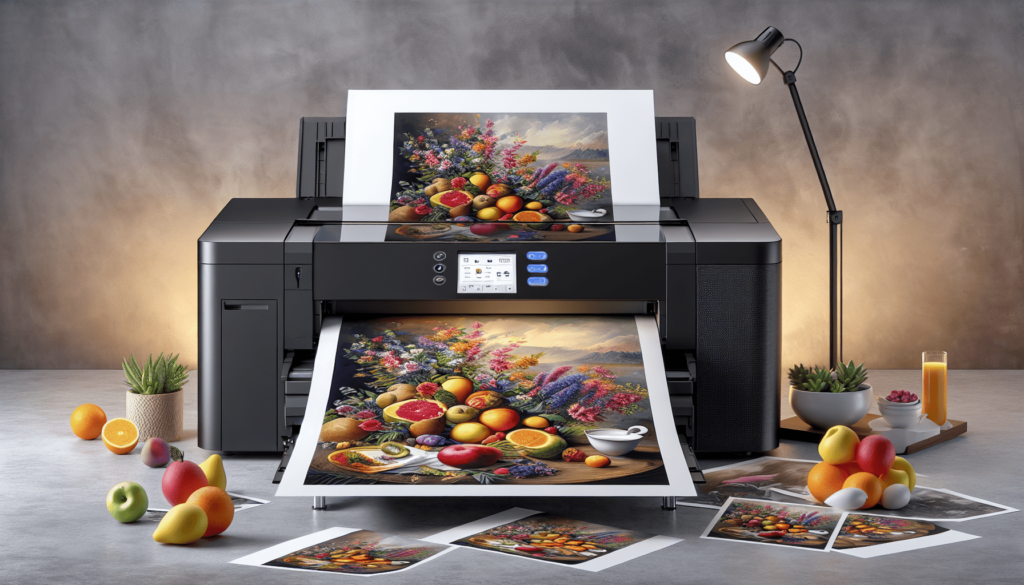Welcome to a guide on the top techniques for printing high-quality art prints! In this article, you will discover the key factors to consider when printing art pieces that truly showcase the beauty and detail of the original artwork. From selecting the right paper and inks to understanding color management and resolution, these techniques will help you achieve stunning results that will make your art prints stand out. Whether you are a budding artist or a seasoned professional, these tips will take your printing game to the next level. Have you ever wanted to create stunning art prints that truly showcase your artistic talents? Printing high-quality art prints can be a daunting task, but with the right techniques and tools, you can achieve professional results right from the comfort of your home. In this article, we will explore some of the top techniques for printing high-quality art prints that will wow your audience and elevate your artwork to the next level. Let’s dive in and unleash your creativity!
Choosing the Right Printer
When it comes to printing high-quality art prints, selecting the right printer is crucial. You will want a printer that can produce vibrant colors, sharp details, and accurate color reproduction to bring your artwork to life. Inkjet printers are generally preferred for art prints due to their ability to produce rich and saturated colors. Look for a printer with a wide color gamut and high resolution for the best results.
Inkjet vs. Laser Printers
Inkjet printers are the preferred choice for art prints due to their ability to produce high-quality colors and details. However, laser printers can also produce good results for black and white artwork or line drawings. Consider the type of artwork you will be printing and choose a printer that best suits your needs.
Selecting the Right Paper
Choosing the right paper for your art prints is just as important as selecting the right printer. The type of paper you use can greatly impact the final look and feel of your artwork. Matte paper is ideal for art prints as it reduces glare and provides a smooth finish that is perfect for showcasing fine details. Glossy paper, on the other hand, can enhance color saturation but may show fingerprints and glare.
Different Paper Finishes
There are various paper finishes to choose from, each offering a unique look and feel to your art prints. Matte paper provides a smooth finish with minimal glare, while glossy paper offers vibrant colors but may show fingerprints. Consider experimenting with different paper finishes to find the one that best complements your artwork.
Calibrating Your Monitor
One often overlooked aspect of printing high-quality art prints is calibrating your monitor. Your monitor’s display settings can greatly affect the way your artwork appears on screen, leading to discrepancies between what you see on your monitor and the final printed result. Calibrating your monitor ensures that the colors and brightness levels are accurate, allowing you to make informed adjustments to your artwork.
Using a Monitor Calibration Tool
Investing in a monitor calibration tool can help you achieve accurate colors and brightness levels on your screen. These tools work by measuring your monitor’s display settings and creating a custom profile to ensure that your artwork appears as intended. By calibrating your monitor, you can make informed decisions when editing and preparing your artwork for printing.
Color Management
Color management is a crucial aspect of printing high-quality art prints. Ensuring that your colors are accurately represented from screen to print is essential for achieving professional results. By implementing color management techniques, you can maintain color accuracy and consistency throughout the printing process.
Understanding Color Profiles
Color profiles are essential for maintaining color accuracy across different devices and printing processes. By using ICC profiles, you can ensure that your colors are accurately represented from your monitor to your printer. Make sure to select the appropriate color profile for your printer and paper combination to achieve the best results.
Image Resolution and File Format
When preparing your artwork for printing, image resolution and file format play a significant role in the final outcome. High-resolution images with sufficient detail are essential for producing sharp and clear art prints. Additionally, using the right file format can preserve the quality of your artwork and ensure that it is print-ready.
Image Resolution Guidelines
When printing art prints, it is recommended to use images with a resolution of at least 300 DPI (dots per inch) for optimal results. This resolution ensures that your artwork is sharp and detailed, making it suitable for high-quality printing. Avoid scaling up images with low resolution as this can result in pixelation and loss of quality.
Understanding Color Spaces
Color spaces are essential for maintaining color accuracy in your art prints. Different color spaces represent colors differently, and understanding how they work can help you achieve consistent and accurate results. By selecting the right color space for your artwork, you can ensure that your colors are faithfully reproduced from screen to print.
RGB vs. CMYK Color Spaces
RGB (Red, Green, Blue) and CMYK (Cyan, Magenta, Yellow, Black) are the two main color spaces used in digital imaging. RGB is used for displaying colors on screen, while CMYK is used for printing. When preparing your artwork for printing, make sure to convert your images from RGB to CMYK to ensure that your colors are accurately reproduced on paper.
Post-Processing Techniques
Post-processing techniques can help enhance the quality of your art prints and ensure that they look their best. From adjusting colors and contrast to removing imperfections, post-processing can elevate your artwork to the next level. By implementing these techniques, you can fine-tune your prints and achieve professional results.
Using Editing Software
Editing software such as Adobe Photoshop or Lightroom can help you adjust colors, contrast, and sharpness to enhance the quality of your prints. These tools offer a wide range of editing capabilities, allowing you to make precise adjustments to your artwork. Experiment with different editing techniques to find the ones that work best for your art prints.
Printing and Paper Settings
Before printing your art prints, it is essential to adjust the printer and paper settings to achieve the desired results. By selecting the right print settings and paper type, you can ensure that your artwork is reproduced accurately and with high quality. Take the time to experiment with different settings to find the combination that works best for your prints.
Print Quality and Paper Thickness
When printing art prints, consider adjusting the print quality settings to achieve the best results. Higher print quality settings can produce sharper and more detailed prints but may take longer to print. Additionally, selecting the appropriate paper thickness can enhance the look and feel of your artwork, adding a touch of professionalism to your prints.
Maintaining Your Printer
To ensure that your printer continues to produce high-quality art prints, it is essential to maintain it regularly. Proper care and maintenance of your printer can extend its lifespan and prevent issues such as clogged nozzles or streaks on prints. By following these maintenance tips, you can keep your printer in top condition and ensure consistent results.
Cleaning and Calibration
Regularly cleaning your printer’s printhead and performing calibration checks can help prevent issues such as color inaccuracies and streaks on prints. Use a printer maintenance kit to clean the printhead and perform regular calibration checks to ensure that your printer is functioning optimally. Additionally, replace ink cartridges as needed to maintain print quality.
Conclusion
Printing high-quality art prints requires attention to detail, proper techniques, and the right tools. By selecting the right printer, paper, and settings, calibrating your monitor, and implementing color management techniques, you can achieve professional results that showcase your artistic talents. Experiment with different post-processing techniques and paper finishes to find the ones that work best for your artwork. With these top techniques for printing high-quality art prints, you can elevate your artwork to the next level and create stunning prints that will wow your audience. Start printing and unleash your creativity today!

